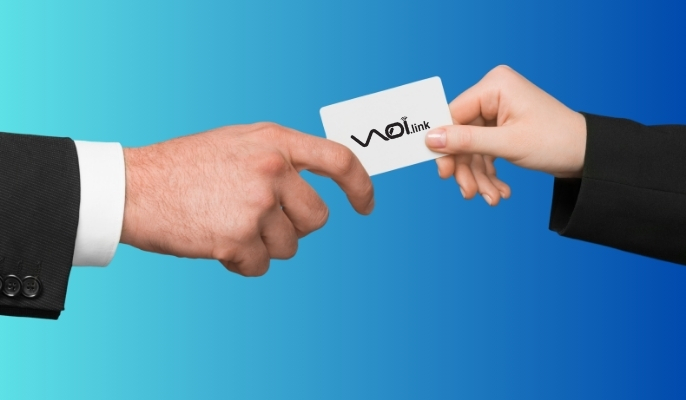Woi.link Turning Paper into Power. Go Green with Woi.link Magic
Go Green. Turn Paper into Power with Woi.link!
Stop Printing Thousands of Wasteful Cards !
Stop Printing 1000's Paper Cards Ends up in the Bin
Sustainability at your fingertips. Save Trees, Save Nature 🌱
Sustainability Made Simple. Save Nature 🌱
Crafting the Ideal Business Cards
Created on 8 October, 2023 • NFC Cards • 306 views • 2 minutes read

Crafting the ideal business card is a crucial aspect of making a strong professional impression.
Absolutely, it's time for a fresh approach to your business cards! The standard template you've been using for years no longer does justice to your brand. In this blog, I'll share eight invaluable tips for crafting the perfect business card and explore how the digital age of networking might be your ideal solution.
First and foremost, your card should reflect your brand's essence. Consider its core values, associated colors, and the emotions it evokes. This understanding will lay the groundwork for your card's design, including the choice of material.
Clear Branding and Logo Placement Ensure your business card prominently features your company logo and brand colors. This helps establish brand identity and recognition.
Simplicity is key in the modern era. While the digital realm offers endless design possibilities, a clean and uncluttered layout reigns supreme. This ensures your card maintains a professional and easily navigable appearance.
Essential Contact Information Include key details like your name, job title, company name, phone number, email address, and website. Keep the font clear and legible.
Utilize White Space Avoid cluttering the card with excessive information or design elements. White space helps maintain a clean and professional look.
Choose the Right Font Select a font that is easy to read, even in small print. Avoid overly decorative fonts that may hinder readability.
Consider Card Size and Shape Standard business card dimensions are 3.5 x 2 inches. However, you can opt for unique shapes or sizes to make your card stand out.
High-Quality Printing and Paper Invest in professional printing and use high-quality cardstock. This reflects positively on your business and ensures durability.
Include a Call to Action (CTA) Encourage recipients to take a specific action, such as visiting your website, following you on social media, or scheduling a meeting.
Incorporate Visual Elements Use visuals like images, icons, or patterns that align with your brand and industry. However, maintain a balanced and uncluttered design.
Double-Sided Design If necessary, use both sides of the card to provide additional information or showcase a portfolio of your work.
Highlight Unique Selling Points (USPs) Mention what sets you or your business apart from competitors. This could be a unique service, product, or expertise.
Consider Special Finishes Embossing, foil stamping, or matte/glossy finishes can add a tactile and visual appeal to your card.
Test for Readability Ensure that all text is easily readable, even in different lighting conditions. Test your card on different devices and in various environments.
Keep it Relevant Tailor the design to your industry and target audience. For example, a creative industry may allow for more artistic elements, while a corporate setting may require a more formal approach.
Proofread and Edit Avoid embarrassing typos or incorrect information by thoroughly proofreading your card before printing.
Update Regularly Ensure that your business cards always reflect current information. This includes any changes in contact details, job titles, or branding.
By applying these strategies, you can create a business card that not only provides essential information but also leaves a lasting and positive impression on potential clients or contacts.
Popular posts
-
All About NetworkingWoilink Platform • 335 views
-
-
-
-
